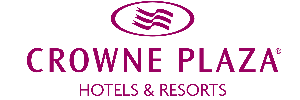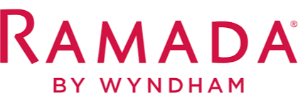The professional care of towels, bathrobes, and other salon textiles is essential for customer satisfaction, brand reputation, and operational efficiency. This guide addresses sustainable laundry technologies, stain pre-assessment, and proper disinfection steps, along with supplier selection, contract clauses, and quality monitoring practices. Readers can integrate these recommendations into daily salon operations to enhance hygiene standards and client experience. Expert insights and operational control checklists support practical implementation.
Professional Cleaning Approaches for Hair Salon Textile Hygiene
Hair salon textile hygiene directly influences the quality of service offered to clients. A structured approach requires workflow standardization, operational procedures, and consistent staff training. Textiles such as towels, robes, and capes should be sorted and processed separately. Stain assessment and chemical selection must follow clear criteria. Washing parameters—temperature, detergent type, water hardness, and drying—should preserve texture and color. Integration with professional laundry services ensures traceable processes backed by certification. Monitoring systems should record temperature, dosage, and drying data. Sustainable technologies and low-temperature cycles lower costs while extending textile lifespan.
Stain Removal Techniques for Hair Dye and Oil Residue
In hair salons, towel hygiene demands specific expertise due to frequent exposure to dyes, oils, and styling chemicals. The stain type—whether oil-based, colorant, or protein—must first be classified. Oil stains respond best to emulsifying agents and balanced detergent mixes, while dye stains require non-oxidizing enzyme-based solutions to maintain color stability. Preventing cross-contamination involves designated wash baskets and separate machine cycles. Contracts with external laundries should include defined chemical concentrations, treatment durations, and rewash conditions. Regular quality checks and colorfastness tests sustain high textile hygiene standards and operational consistency.
Integrated Cleaning Approaches in Spa Textile Washing Services
In spa and salon operations, textile hygiene is a key factor in perceived comfort and luxury. Effective protocols begin with stain detection, chemical selection, and process sequencing. When outsourcing to spa textile washing services, contractual clauses should specify parameters, hygiene guarantees, and auditing terms. Sustainable washing technologies enhance both environmental performance and cost efficiency. Adherence to salon hygiene principles requires supplier evaluation, performance audits, and temperature-chemical tracking. Proper use of softeners and fabric protectants ensures long-lasting texture without chemical overuse. Continuous monitoring supports quality assurance and service reliability.
Maintaining Texture and Color Durability with Softness Preservation Techniques
Fabric softness and color retention are essential to customer satisfaction. Correct detergent selection and dosing prevent fiber damage while maintaining tactile comfort. Controlled softener use and low-temperature washing improve energy efficiency and fabric longevity. Humidity and heat monitoring during drying prevent shrinkage or stiffness. Pre-treatment with pH-balanced detergents and color stabilizers protects textile brightness. Collaborations with professional laundries specializing in softness preservation techniques should include defined control measures and contractual quality standards. Training and periodic performance testing ensure continuous improvement.
Lasting Hygiene and Aesthetic Care through Professional Laundry Technology
Modern laundry technology is central to achieving durable hygiene and aesthetic outcomes in salon textiles. Proper equipment selection, precise dosing systems, and moisture-controlled drying cycles ensure consistent cleanliness and longevity. Dedicated washing cycles for towels and robes prevent fiber wear. Sustainable systems reduce water and energy consumption while supporting cost optimization. Quality assurance should include supplier audits, certification verification, and routine performance reports. Continuous staff training and technological updates sustain salon textile hygiene practices and enhance brand credibility.
























